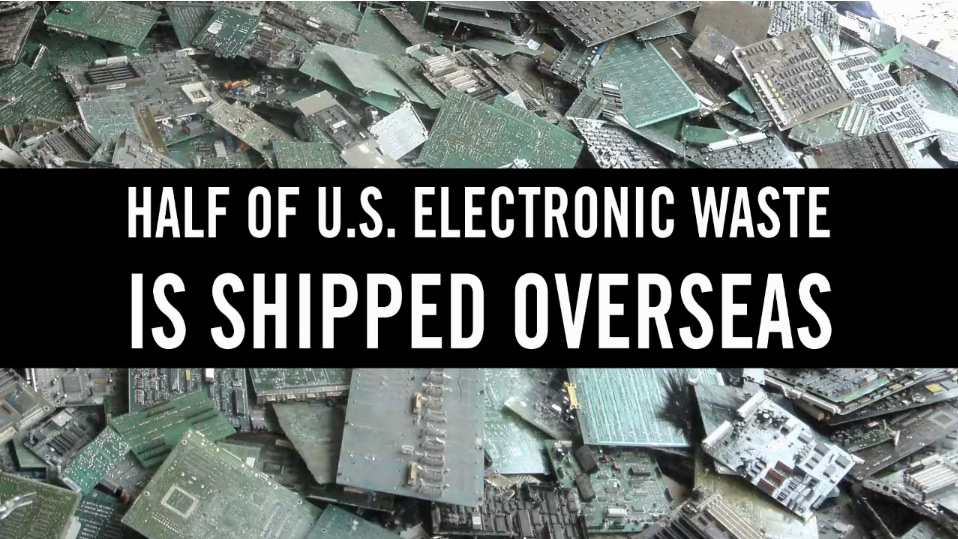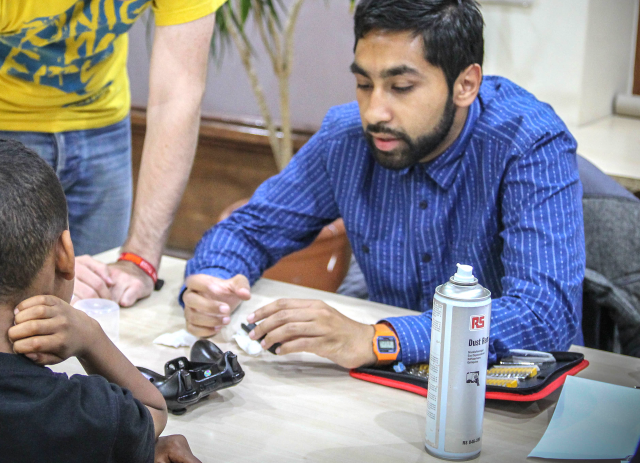New scientific findings indicate that Bristol and Glasgow could achieve a ten percent reduction in sediment from its water supply by investing in watershed conservation
 Arlington, VA — Britain’s water quality is under unprecedented pressure from high nutrient and sediment levels due to increasing populations, climate change and environmental degradation. With urban water use on the rise, securing an adequate and clean water supply is an urgent challenge.
Arlington, VA — Britain’s water quality is under unprecedented pressure from high nutrient and sediment levels due to increasing populations, climate change and environmental degradation. With urban water use on the rise, securing an adequate and clean water supply is an urgent challenge.
The “Urban Water Blueprint” released today by The Nature Conservancy, in partnership with the C40 Cities Climate Leadership Group and the International Water Association, provides an in-depth analysis of 2,000 drinking sources (rivers, forests and other ecosystems from which water comes from) serving over 500 large and medium sized cities. This includes the 100 largest cities in the world, representing nearly 1 billion people. Collectively, these cities represent $21.8 trillion in economic activity, or 48 percent of the global urban GDP.
Preventing water from becoming polluted can often be more cost-effective than treatment. The analysis finds that one in four cities would see a positive return on investment from investing in watershed conservation.
Bristol and Glasgow have been identified in the “Urban Water Blueprint” as cities that could reduce sediment and nutrients from their water sources by ten percent through incorporating conservation solutions and subsequently lowering their water treatment costs by an average of five percent.
“This analysis answers for the first time, the fundamental questions of what investments can be taken to incorporate nature in the delivery of clean water and the quantitative value of these actions for water managers,” said Giulio Boccaletti, The Nature Conservancy’s global managing director for water.
“Cities that invest in watershed conservation can no longer be the rare exception; rather such investments need to become a regular part of the toolbox for water managers. For this to happen, people living in cities need to understand where their water comes from so that city and water managers can support measures that will often be implemented outside of metropolitan areas.”
The “Urban Water Blueprint” not only identifies the water risks facing large cities around the world, but analyzes the potential for five conservation strategies that have proven performance and wide applicability across natural and working (agricultural) landscapes. The strategies include Forest Protection; Reforestation; Agricultural Best Management Practices; Riparian Restoration; and Forest Fuel Reduction.
Each strategy is evaluated on how effectively it reduces sedimentation and nutrient pollution in the 2,000 watersheds that were analyzed.
Forest protection and reforestation have been identified as the best conservation strategies for both British cities. The analysis identified that Glasgow has the highest potential for sediment and nutrient reduction from its watersheds and Bristol a medium potential on sediment reduction.
“We found that watershed conservation can be both an economical viable and environmentally sound investment for developed and developing cities alike,” said Robert McDonald, senior scientist at The Nature Conservancy and one of the lead authors of the report. “What’s so exciting is that cities that embrace both the engineered and natural solutions to securing adequate and clean water supplies can not only meet future demand, they can literally reshape surrounding landscapes for the better.”
“IWA sees the growing strategic importance of connecting cities to their watersheds, and water utilities as pivotal players in making the various inter-dependencies work. Watershed conservation solutions will increasingly need to become mainstream options for water utilities and cities for enhancing water security” Tom Williams, director of programmes, at The International Water Association.
"Access to clean and adequate water supplies is a critical issue facing global mayors, and one made more pressing as cities grapple with the impacts of climate change. The research released today shines a spotlight on the need for urban watershed conservation strategies, and paves the way for cities around the world to share knowledge and implement viable solutions," said Seth Schultz, director of research, measurement & planning at C40.
About The Urban Water Blueprint
The “Urban Water Blueprint – Mapping Conservation Solutions to the Global Water Challenge” was made possible through generous contributions from Ecolab through its Foundation, Starwood Hotels and Resorts Worldwide Foundation, and 100 Resilient Cities – Pioneered by The Rockefeller Foundation.
The “Urban Water Blueprint” has an accompanying website as a tool for city and water managers to evaluate the condition of drinking watersheds and the potential impact that conservation strategies, such as reforestation and agricultural best management practices, can have on water quality.
Displaying new information on more than 2,000 watersheds and 530 cities, the Blueprint provides science-based recommendations on where these strategies are most cost-effective. This data, along with detailed case studies of cities that have successfully adopted watershed conservation, can serve as a guide for city and water managers planning future infrastructure investments that include both engineered and natural infrastructure, as well as a learning tool for the one billion people living in the featured cities.
The Nature Conservancy is a leading conservation organization working around the world to protect ecologically important lands and waters for nature and people. To date, the Conservancy and its more than one million members have been responsible for the protection of more than 119 million acres worldwide. Visit The Nature Conservancy on the Web at www.nature.org.
The Cities Climate Leadership Group (C40) is a network of large and engaged cities from around the world committed to implementing meaningful and sustainable climate-related actions locally that will help address climate change globally. C40 was established in 2005 and expanded via a partnership in 2006 with President William J. Clinton’s Climate Initiative (CCI). The current chair of the C40 is Rio de Janeiro Mayor Eduardo Paes; the 108th Mayor of New York City Michael R. Bloomberg serves as President of the Board. To learn more about the work of C40 and our Cities, please visit www.c40.org, follow us on Twitter @c40cities and like us on Facebook at http://www.facebook.com/C40Cities.
The International Water Association (IWA) is a global reference point for water professionals and a source of knowledge, experience and leadership for sustainable urban and basin-related water solutions. IWA members come together from across the water profession to share knowledge, experience and know-how that deliver solutions to the most pressing global water challenges. The strength of IWA lies in the professional and geographic diversity of its members: we are represented in 130 countries through 10,000 individual and 500 corporate members, including scientists from across many disciplines, economists, accountants, social scientists, and managers and leaders among those professions. www.iwa-network.org
Source: The Nature Conservancy

 In order to build an adequate low-carbon 21st century energy system that scientists have said is necessary to stave off the worst impacts of climate change, a new report argues that the world must look beyond large-scale, centralized renewable projects—such as industrial solar and wind farms—and take up efforts to build more democratically-controlled and decentralized power grids.
In order to build an adequate low-carbon 21st century energy system that scientists have said is necessary to stave off the worst impacts of climate change, a new report argues that the world must look beyond large-scale, centralized renewable projects—such as industrial solar and wind farms—and take up efforts to build more democratically-controlled and decentralized power grids. This post aims to explore the opportunities that may arise with the spread of the collaborative economy on a given territory. It is based on the work of
This post aims to explore the opportunities that may arise with the spread of the collaborative economy on a given territory. It is based on the work of  Journalists have a responsibility to reflect the world more accurately, believes Monique Villa, CEO of the Thomson Reuters Foundation. But as she tells Lucy Purdy, there is now a resurgence in human-centred stories and media that triggers positive change
Journalists have a responsibility to reflect the world more accurately, believes Monique Villa, CEO of the Thomson Reuters Foundation. But as she tells Lucy Purdy, there is now a resurgence in human-centred stories and media that triggers positive change Onshore wind is cheaper than coal, gas or nuclear energy when the costs of ‘external’ factors like air quality, human toxicity and climate change are taken into account, according to an EU analysis.
Onshore wind is cheaper than coal, gas or nuclear energy when the costs of ‘external’ factors like air quality, human toxicity and climate change are taken into account, according to an EU analysis. Pieter van de Glind and Harmen van Sprang are the co-founders of
Pieter van de Glind and Harmen van Sprang are the co-founders of  Soil is the crucial building block for a city farm. Learn how to build healthy soil to nourish your farm garden.
Soil is the crucial building block for a city farm. Learn how to build healthy soil to nourish your farm garden. North Dakota recently discovered piles of garbage bags
North Dakota recently discovered piles of garbage bags  BERLIN — Fresh from a bracing workout at the gym, Anton Kaiser gazed hungrily into a refrigerator, considering arugula, pineapple jam, salted butter and two bags of green grapes before reaching for a white bread roll, baked that morning. “I haven’t eaten all day,” he said, “so it’s great.”
BERLIN — Fresh from a bracing workout at the gym, Anton Kaiser gazed hungrily into a refrigerator, considering arugula, pineapple jam, salted butter and two bags of green grapes before reaching for a white bread roll, baked that morning. “I haven’t eaten all day,” he said, “so it’s great.” Some people might take one look at a patch of lambsquarter and yank it out of the ground to rid their garden or yard of an undesirable weed. Not wild-foods advocate and author Katrina Blair. At her home in Durango, CO, she tends to her lambsquarter and a number of other so-called weeds with the utmost care.
Some people might take one look at a patch of lambsquarter and yank it out of the ground to rid their garden or yard of an undesirable weed. Not wild-foods advocate and author Katrina Blair. At her home in Durango, CO, she tends to her lambsquarter and a number of other so-called weeds with the utmost care.
 Food forests or Forest gardening have been around for a long time with many of the native cultures practicing this form of sustainable agriculture. It is a form of low-maintenance plant-based food production which replicates natural ecosystems, incorporating fruit and nut trees, shrubs, herbs, running vines and perennial vegetables. Beneficial plants and companion planting is a big part of the food forest system.
Food forests or Forest gardening have been around for a long time with many of the native cultures practicing this form of sustainable agriculture. It is a form of low-maintenance plant-based food production which replicates natural ecosystems, incorporating fruit and nut trees, shrubs, herbs, running vines and perennial vegetables. Beneficial plants and companion planting is a big part of the food forest system. In the first part of the series “The Quest for New Value(s)”, I argued that the collaborative economy was a convenient “catch-all” concept, utterly insufficient to create a new paradigm shift all by itself. Yet we fiercely need a paradigm shift. My take is that the true paradigm shifter we are looking for is less the collaborative economy than its indirect impact on our social organization and our culture. Although less visible, they have the power to profoundly upset the current social order and are the key to what, at OuiShare, we call a collaborative society.
In the first part of the series “The Quest for New Value(s)”, I argued that the collaborative economy was a convenient “catch-all” concept, utterly insufficient to create a new paradigm shift all by itself. Yet we fiercely need a paradigm shift. My take is that the true paradigm shifter we are looking for is less the collaborative economy than its indirect impact on our social organization and our culture. Although less visible, they have the power to profoundly upset the current social order and are the key to what, at OuiShare, we call a collaborative society. Most of us gardeners eagerly anticipate getting our hands in the dirt after a long winter indoors. To get a jump on the spring growing season requires a bit of planning, as well as knowledge of cold-tolerant vegetables and season extension techniques.
Most of us gardeners eagerly anticipate getting our hands in the dirt after a long winter indoors. To get a jump on the spring growing season requires a bit of planning, as well as knowledge of cold-tolerant vegetables and season extension techniques. As local newspapers close and budget cuts put increasing pressure on remaining journalists, the hyperlocal journalism movement is stepping up to provide the services communities rely on. Nicola Slawson finds out more
As local newspapers close and budget cuts put increasing pressure on remaining journalists, the hyperlocal journalism movement is stepping up to provide the services communities rely on. Nicola Slawson finds out more
 Ever since I can remember, my internal picture of the year has been a circle - with summer opposite winter, spring opposite autumn. This makes perfect sense if you consider that, after all, a circle is the shape of the Earth's orbit around the sun.
Ever since I can remember, my internal picture of the year has been a circle - with summer opposite winter, spring opposite autumn. This makes perfect sense if you consider that, after all, a circle is the shape of the Earth's orbit around the sun. When most people think of bee keeping, jars of glistening honey come to mind. And while there’s no argument that honey is perhaps one of the sweetest and immediate rewards of bee keeping, it should be considered that bees and other pollinators provide benefits on such a larger scale. It’s important to support pollinators of all kinds and we can do this by providing a variety of housing to not only Honey Bees but other species of pollinators as well.
When most people think of bee keeping, jars of glistening honey come to mind. And while there’s no argument that honey is perhaps one of the sweetest and immediate rewards of bee keeping, it should be considered that bees and other pollinators provide benefits on such a larger scale. It’s important to support pollinators of all kinds and we can do this by providing a variety of housing to not only Honey Bees but other species of pollinators as well. Okay, your iPhone is not directly causing a problem; rather it, in combination with all the other electronics of the world, contributes to a devastating global issue–electronic waste dumping. Even more devastating, however, is the fact that the very people who fuel the endless cycle of electronics consumption have no idea that this problem exists*. The latest and greatest gadgets hit the market, and the old (and usually, perfectly good) devices fill our closets, trash cans, and maybe (but likely not) our recycling bins. Out with the old, and in with the new, right? Well, it’s not that simple.
Okay, your iPhone is not directly causing a problem; rather it, in combination with all the other electronics of the world, contributes to a devastating global issue–electronic waste dumping. Even more devastating, however, is the fact that the very people who fuel the endless cycle of electronics consumption have no idea that this problem exists*. The latest and greatest gadgets hit the market, and the old (and usually, perfectly good) devices fill our closets, trash cans, and maybe (but likely not) our recycling bins. Out with the old, and in with the new, right? Well, it’s not that simple. For the solar and wind industries in the United States, it has been a long-held dream: to produce energy at a cost equal to conventional sources like coal and
For the solar and wind industries in the United States, it has been a long-held dream: to produce energy at a cost equal to conventional sources like coal and  Beginning a garden is to embark into a world full of joy, excitement, and reward. For those of you who are just beginning to garden I say, "Welcome! Enjoy your mistakes, learn from them." As my grandfather told me, "The basics are the same for everyone, but we all have our own way of gardening." Don't be afraid to try and fail, learn and implement the lessons in your next garden. There is a great deal of information available to you, especially with the Internet, but that can be kind of daunting. I suggest finding a resource or two that you can identify with and trust. If you don't have someone in your family who is a gardener, the best thing to do is to find a local farmer and learn from them, you can start by visiting your local farmers' market. Most of us are happy to share our knowledge with someone who truly wants to learn.
Beginning a garden is to embark into a world full of joy, excitement, and reward. For those of you who are just beginning to garden I say, "Welcome! Enjoy your mistakes, learn from them." As my grandfather told me, "The basics are the same for everyone, but we all have our own way of gardening." Don't be afraid to try and fail, learn and implement the lessons in your next garden. There is a great deal of information available to you, especially with the Internet, but that can be kind of daunting. I suggest finding a resource or two that you can identify with and trust. If you don't have someone in your family who is a gardener, the best thing to do is to find a local farmer and learn from them, you can start by visiting your local farmers' market. Most of us are happy to share our knowledge with someone who truly wants to learn.
 Imagine living in an inner city and buying your vegetables and fruit just moments after they've been harvested. Imagine waking up to the rustic sound of a cock crowing. Imagine your household waste and sewage serving to grow even more food in a highly sustainable way. This is the promising picture painted by the EU-funded Supurbfood project.
Imagine living in an inner city and buying your vegetables and fruit just moments after they've been harvested. Imagine waking up to the rustic sound of a cock crowing. Imagine your household waste and sewage serving to grow even more food in a highly sustainable way. This is the promising picture painted by the EU-funded Supurbfood project. Tell us a little about yourself.
Tell us a little about yourself.
 Is trust the secret ingredient in the recipe for creating a brave new world?
Is trust the secret ingredient in the recipe for creating a brave new world?


 Many vegetables can be expensive to purchase by growing the most expensive vegetables in your garden and buying the least inexpensive vegetables at your grocery store you can easily help drop your food budget. This especially important for people like me with very limited space to grow everything that I consume.
Many vegetables can be expensive to purchase by growing the most expensive vegetables in your garden and buying the least inexpensive vegetables at your grocery store you can easily help drop your food budget. This especially important for people like me with very limited space to grow everything that I consume. SEATTLE, Wash. -- Here's an excuse to use the next time someone asks you to rake the leaves: science.
SEATTLE, Wash. -- Here's an excuse to use the next time someone asks you to rake the leaves: science. Stores like Lowe’s and Home Depot often don’t live up their promise of “home improvement.” After all, if we’re throwing away useful old materials, buying new stuff, and working all weekend just to keep up with the latest trends in design and decor, but the house still leaks like a sieve and gobbles electricity, what’s really being improved?
Stores like Lowe’s and Home Depot often don’t live up their promise of “home improvement.” After all, if we’re throwing away useful old materials, buying new stuff, and working all weekend just to keep up with the latest trends in design and decor, but the house still leaks like a sieve and gobbles electricity, what’s really being improved?























